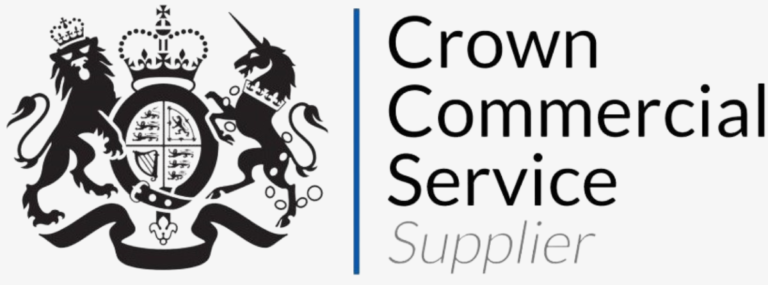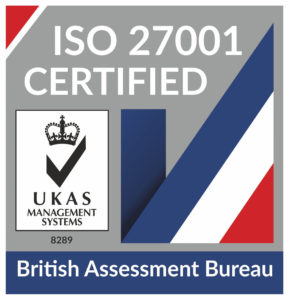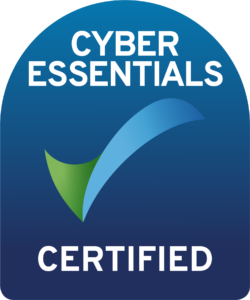
HaloCRM Roadmap
Find out about all the upcoming developments in HaloCRM
In Progress
Google Bard
Suggest responses for Agents to customers, check Agent grammar, AI generate chat responses and more with Google Bard AI.
Community Forum for Self Service Portal
An area on the Self Service Portal for community threads and discussion.
Mailchimp Integration
This integration will allow you to send bulk emails via Mailchimp to Customer groups from within Halo. Start Mail campaigns against groups of Customers. Review insights about Mail campaigns from within Halo.
Text Global Channel
New channel to allow texts from Text Global into HaloCRM.
Up Next
Multi-Page Ticket Logging
Ability to split a ticket form down into multiple pages based on field groups, with a progress completion bar.
Conversational Ticket View
New conversational, customer-focused view for managing customer service and sales. Designed to reduce duplication and drive customer satisfaction.
Telegram Integration
Create Tickets from Telegram messages and send messages to Telegram users
Viber Channel
New channel to allow for communication with your customers using Viber.
WeChat Channel
New channel to allow for communication with your customers using WeChat.
Future
Recently Completed
Added document management module
Halo now has a dedicated area for document management.
Here you can create folders, upload new documents, and manage versions of documents.
There is an agent permission for document management, allowing agents to be restricted to no access, read access, or read and write access.
The document management area can be displayed as either a table or a catalogue view based on a global setting.
From here you can add new folders or files. Folders can be added using the new button and can be edited by right-clicking on them. Folder names must be unique within a parent folder. Clicking on a folder will take load the contents of that folder.
New documents can be added using the new button, or by dragging an attachment onto the list, which adds the attachment to the current folder.
When adding a new folder using the button, it will default to the parent folder you were currently viewing. You can set a note and add the attachment as either an upload or as a link if this functionality is enabled using the setting "Allow link attachments".
Once a document has been added you can download the current version of the attachment or upload a new version. The new version you upload must have the same name as the existing document. All previous versions can be viewed and downloaded from the versions tab of the document.
Deleting a document will delete all of it's versions and deleting a folder will delete all documents within the folder.
With the document management module enabled, if an agent has at least read access to it they can select documents to attach to tickets and actions. This can be done using the "Add attachment" button and selecting "Attach Document". This will allow you to search for documents to attach.
You can filter on the parent folder of the document and sort by filename and creation date.
Added a Distribution Lists module
This module will allow you to add Users to a list, from which you can send Bulk Emails.
Communications made to the Users on these lists are tracked and can be viewed in the History tab of the Distribution List, or from the Users activity feed if the "Show a Users Distribution List activity in their Activity Feed" setting in Config > Users > Distribution lists is enabled.
Distribution Lists can also be created and Users added via a spreadsheet in Config > Users > Distribution Lists.
A permission has been added to control how Agents can use Distribution Lists.
Users can also be added in Bulk from existing User lists by selecting with the checkbox, and using the edit drop down menu.
XSOAR integration is now available
This integration allows for the creation of tickets in Halo from incidents in XSOAR.
For instructions on how to configure this please consult the following guide: https://halo.haloservicedesk.com/kb?id=2056
Various improvements to AI functionality
Various changes have been made to Halo's AI functionality to improve the functionality and streamline the configuration of the different functionality.
There is now an AI module in Halo. From here you can select your connection type: none, Halo's default Azure OpenAI connection (when available), your own Azure OpenAI connection, or your own OpenAI connection.
For the latter 2, you will have to provide your credentials, whereas the option to use Halo's connection will be available for all hosted customers and will not require your credentials.
Note: By selecting the option to use Halo's Azure OpenAI you consent to send your data to our Azure OpenAI.
Once you have configured a connection you can configure the following functionality:
Embeddings
Create an embedding score comparing the current ticket to other similar related tickets. The tickets that match your specified minimum score will be displayed in an AI Suggestions tab on the ticket.
When using your own Azure OpenAi, you can specify a separate model to use for embeddings.
AI Insights
Use AI to analyse a ticket to give further insights. This includes a 10 word summary, an estimated priority, the type of ticket, and the tone of the customer.
If the corresponding AI fields have been added to the ticket type, this information will be displayed in an AI Insights tab on the ticket.
Knowledge Base
This allows you to create knowledge base articles using AI. This takes in the correspondence between the user and the agent of the ticket and creates a description and resolution for the article and then either directly creates the article or creates an article draft ticket, depending on your Halo settings.
Emotion Detection
This takes in the messages from the user of the ticket and summarises how the user is feeling, as well as estimating a satisfaction level from 1 to 10.
If the corresponding AI fields have been added to the ticket type, this information will be displayed in an AI Insights tab on the ticket.
AI Reports (Only available for hosted customers)
Use AI to write reports on various aspects of Halo such as tickets, users, assets, and orders. For more information, see here.
Thank You Detection
When using the incoming service, you can use AI to detect emails from end users that are merely Thank You messages and do not require any further action from the agent and prevent these emails from updating the status of the ticket.
Actions
AI can be used to enhance the responses written by agents to improve spelling, vocabulary, tone, etc.
Live Chat
Use AI to respond to user inquiries using their conversation for context
Custom Integrations
The functionality can be extended through the use of integration runbooks and methods.
Enabling/disabling the settings for functionality that utilises runbooks will automatically download and enable/disable the relevant runbooks. This allows all the AI functionality to be managed from one convenient screen.
Any AI runbooks that evaluate ticket information will populate one of the following fields:
- AI Tonality
- AI Generated Summary
- AI Satisfaction Level
- AI Sentiment Analysis
- AI Suggested Priority
- AI Suggested Reolution
- AI Suggested Type
These all show in the AI insights tab on ticket details only. There are also $ variables available for all of these new fields.
Kandji integration is now available
A Kandji integration is now available, allowing for the import of assets.
To use this integration you must generate an API token with permissions to read assets in Kandji. This can be done in the access tab of your Kandji settings. You can also find your API URL here.
You need to enter both the URL for your Kandji instance and an API URL.
Site Mappings
Kandji does not have a concept of sites or customers, so to determine which site an asset should be created against you can use site rules. These rules are based on field values, and if matched will assign an asset to the site of the mapping.
The user of an imported asset will be matched to a user based on their email address. This can also be used to determine the asset's site.
Asset Imports
All types of assets will be imported from Kandji including: Macs, iPads, and iPhones. Various fields can be mapped from Kandji to Halo.
The asset types of the assets can either use a fixed type for all assets, be determined from one of the fields, or use asset type mappings that are determined using rules based on the values of the mapped asset fields.
If none of the rules are matched, a default asset type will be used, which can be configured to not allow the import of any assets that don't match any of the rules, allowing for certain assets to be excluded from the import.
Additionally, there are settings to: deactivate assets deleted from Kandji, not create new assets, not update existing asset types, and not change the site of existing assets.
Assets can be imported manually or on a recurring schedule using the Halo integrator.
Added the ability to manage Microsoft Teams chats from within a Ticket
The functionality can be turned on within the Microsoft Teams integration setup screen on the Chat Management tab.
Once enabled, you will need to create a new Azure application and authorize it within the setup screen. It is recommended that you create a specific user in Azure for this purpose, as the user will be added to all chats created from Halo, and any messages sent from Halo will also be sent from this user.
The application requires a mixture of delegate and application permissions. The application type permissions are required to create subscriptions via the Microsoft Graph API for chats that are created.
The option to enable the ability to see and create new chats is then turned on at Ticket Type level. There is also an option to specify a default name for new chats that will auto-populate on the creation screen, which overrides the global setting found in the integration setup screen.
There are two ways of managing Microsoft Teams chats from within a Ticket.
Ticket Tabs
To enable this functionality, you must enable the following setting at Ticket Type level. Whenever a chat is created, a new individual tab will display on the Ticket for each chat.
To create the chat from within a Ticket, hover over the quick action menu and select the Create Microsoft Teams Chat option. Note that this option will be available on the Ticket regardless of whether the above setting is enabled.
This will display an input screen where you can configure your new chat.
The user who authorized the integration will be automatically added as an owner of the chat during the creation. Any user imported via the Azure Active Directory integration can be added as a member.
Once the chat is created, a new tab will display on the Ticket. As part of the chat creation, a subscription to the chat will be created so that any new messages added to the chat from within Microsoft Teams will be automatically imported.
Using the plus icon in the top right hand corner, new messages can be sent to the chat from Halo. Any message sent from Halo will show in the message list as being sent by the user who authorized the integration, but a sub header showing the agent who performed the action is also shown for auditability.
Custom Dashboards
A new widget type called Microsoft Teams Chats can be added to a custom Ticket dashboard.
The widget will display all chats created from the Ticket in separate tabs, but all within the widget. A new chat can be created when viewing the widget by clicking the plus tab option. The functionality within the widget is identical to the Ticket Tabs method.
A background service will renew any chat subscriptions that are close to expiry on open Tickets. Once a Ticket is closed, the subscription will no longer be renewed and new messages will no longer be imported from Microsoft Teams.
Adobe Commerce (Magento) Integration is now available
This integration will allow you to import Customers registered to your Adobe Commerce/Mageneto store as well as Orders made on the store. Users are also created from the Orders import, to allow you to link Tickets from Customers to Orders.
Customers and Orders can also be imported on a schedule via the Halo Integrator.
The Adobe Acrobat Sign integration is now available
This allows the following:
- Sending quote pdfs to Adobe Acrobat Sign
- Once approved in Sign, updating the Quote in Halo
Added the Coralogix integration
A Coralogix integration is now available, allowing tickets to be created in Halo when alerts are triggered and closed when the alerts are resolved.
Once the integration is enabled, a runbook will automatically be added.
You will need to configure a webhook in Coralogix to post to the URL of your runbook, the UUID of which will need to be entered into the conditions of the first step of the runbook. The notes on the runbook explain exactly what is required and link to Corlogix's guide on how to set up webhooks.
The runbook can be customized to change the content of the tickets created in Halo or to adjust the action added when the alert is resolved.
TD Synnex StreamOne ION integration now available
This is for TD Synnex's StreamOne ION Reseller API.
OAuth credentials can be created for any user within in your ION account that has the 'Account Admin' user role.
The Test Configuration button on the integrations page tests whether the Halo API can connect to the StreamOne ION API.
Customers:
Customers can be mapped and imported from StreamOne ION. Mappings can be set up manually or through the generate mapping option. Customer imports can be through the UI or the integrator.
There are further options to choose a top level for imported customers if top levels are enabled in Halo and to update the main site address of existing customers imported through this integration.
Subscriptions:
Subscriptions can be imported for any mapped customer either manually or via the Halo Integrator.



